Business
Gold Surges to Record High While Bitcoin Struggles Amid Diverging Market Trends
Explore the contrasting trends in the financial market as gold reaches unprecedented highs while Bitcoin faces challenges. Delve into the factors driving these diverging paths and what it means for investors in today’s economic landscape.

Gold and Bitcoin: Divergence in Performance

Gold has surged to a new record high, reaching an impressive $2,564 per ounce on Friday, marking a remarkable 10% increase for the quarter. In stark contrast, Bitcoin (BTC), often referred to as digital gold, has struggled and is currently trading just under $58,000, reflecting a 7% decline over the same period, as per data from CoinDesk. The performance of gold stands out even more when considering that the S&P 500, Wall Street’s benchmark index, has managed only a modest 2% rise this quarter.
Recently, Bitcoin has shown a tendency to move in alignment with technology stocks, largely due to prevailing fears of a potential U.S. economic recession and the looming threat of significant unwinding of “risk-on yen carry trades.” Many analysts believe that the current divergence between BTC and gold can be attributed to unique, idiosyncratic factors. The ongoing rally in gold suggests that favorable macroeconomic conditions may soon be on the horizon for cryptocurrencies as well.
According to Charlie Morris, chief investment officer and founder of ByteTree, gold’s recent surge is closely tied to increased accumulation by central banks—a privilege that Bitcoin has yet to experience. Morris suggests that this accumulation indicates a forthcoming easing of monetary policy. “The appeal of holding government bonds in reserves is diminishing, leading to a significant uptick in gold accumulation by central banks. Historically, gold was priced off U.S. Treasury inflation-protected securities, but it is now being influenced by global economic factors, including structural government deficits,” he explained in an interview with CoinDesk.
Morris further noted, “The strength we are witnessing in gold prices reflects an increasing current and future supply of fiat money, among other economic indicators. Bitcoin is likely to experience a rally either when the economy strengthens or when stimulus measures are announced.” The year-on-year change in the combined fiat money supply growth across the U.S., Eurozone, U.K., and Japan turned positive in August, and this growth may continue as central banks initiate renewed liquidity easing measures. Just recently, the European Central Bank announced a cut in interest rates, and the Federal Reserve is anticipated to follow suit next week, signaling the beginning of a new easing cycle. This could soon lead U.S. investors to hear the familiar call of stimulus.
André Dragosch, head of research at ETC Group, opined that the current rally in gold likely foreshadows a significant decline in inflation-adjusted U.S. government bond yields. Typically, a drop in what are known as real yields prompts investors to shift their funds into riskier assets like Bitcoin and technology stocks, a trend first observed in 2020. “Gold prices have completely decoupled from U.S. real yields. This suggests two possibilities: either gold is overpriced or it is already forecasting a substantial decline in U.S. real yields,” Dragosch stated.
He continued, “A significant decrease in U.S. real yields would equate to a major easing of monetary policy, which has yet to be broadly reflected in the financial markets, except for gold. This scenario suggests that Bitcoin and other assets may soon follow gold’s upward trajectory.” The U.S. 10-year real yield has already retreated to 1.61%, its lowest level in over a year, down from a peak of 2.52% in October, according to data from TradingView.
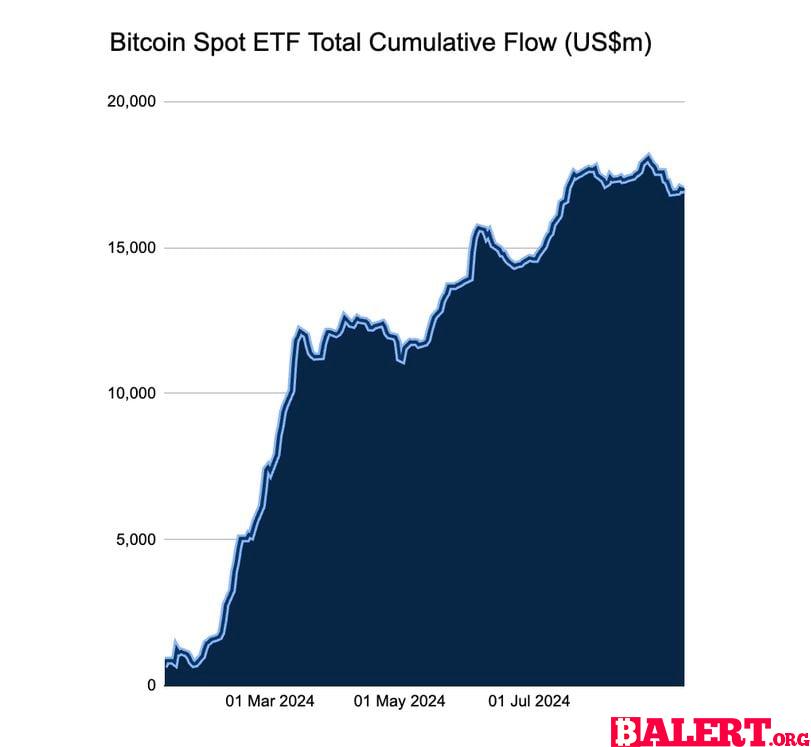
Gold-Bitcoin Demand Divergence
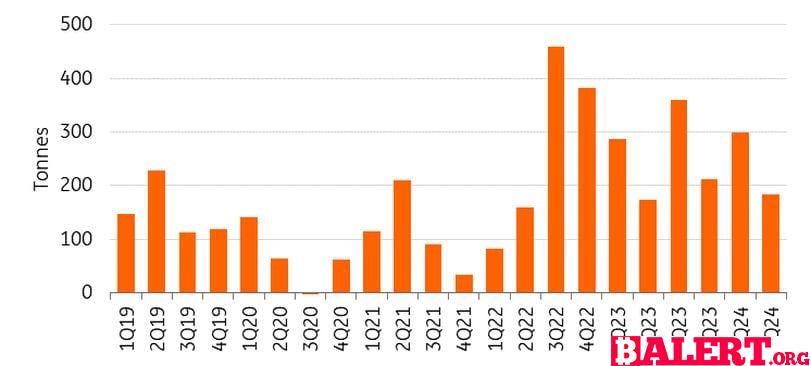
Data from the World Gold Council reveals that central banks acquired 37 tonnes of gold in July, doubling their net purchases from the previous month. This marks the highest monthly acquisition since January, when central banks purchased 45 tonnes. In the entirety of 2022, central banks collectively purchased 1,037 tonnes of gold, which stands as the second-highest annual total on record, following a historic 1,082 tonnes in 2021.
In contrast, the Bitcoin market has faced significant pressure, with billions of dollars’ worth of supply entering the market since June due to liquidations by Germany’s Saxony state, reimbursements to Mt. Gox creditors, and sales by the U.S. government. Additionally, the demand for the 11 U.S.-listed spot exchange-traded funds has weakened in recent months, leading to a net outflow of approximately $1 billion since late August, as detailed by Farside Investors.
The outflows and increased supply have contributed to Bitcoin’s lackluster performance, according to the LondonCryptoClub newsletter service. “Gold is anticipating lower real rates, rising liquidity, and a weaker dollar, much like Bitcoin. However, the difference in supply and demand dynamics is key. Gold has seen substantial demand from central banks, with little negative supply, while Bitcoin has had to absorb a considerable amount of supply in recent months due to distributions from the German and U.S. governments, as well as Mt. Gox reimbursements,” the founders of LondonCryptoClub commented.
“In the short term, gold’s outperformance could serve as a leading indicator of where Bitcoin may be headed,” they added. However, not all participants in the crypto market view gold’s rally as a positive sign.
Alex Kruger, a partner at the digital assets and macro advisory firm Asgard Markets, cautioned against over-analyzing the implications of gold’s rally for Bitcoin. “It’s irrelevant. Bitcoin does not trade in sync with gold. When you scrutinize something too closely, you risk seeing what you want to see,” Kruger remarked in a Telegram chat, especially as some traders recall how gold reached record highs in 2020 before Bitcoin followed suit.
Investors should remain vigilant for a potential resurgence of growth fears in risk assets similar to those observed in August, which saw Bitcoin plummet to $50,000. A prospective 50 basis point rate cut by the Fed next week could serve as a catalyst for such a scenario. “Bitcoin is viewed as a risk-on asset, while gold is considered risk-off. Gold thrives in a cooling economy with falling rates, whereas Bitcoin flourishes in an overheating economy,” Morris concluded.
Business
Bhutan’s Strategic Investment in Bitcoin: A New Era for the Himalayan Kingdom
Explore how Bhutan is embracing Bitcoin as a strategic investment, marking a transformative shift for the Himalayan kingdom. Discover the implications of this move on its economy, sustainability, and future in the digital age.
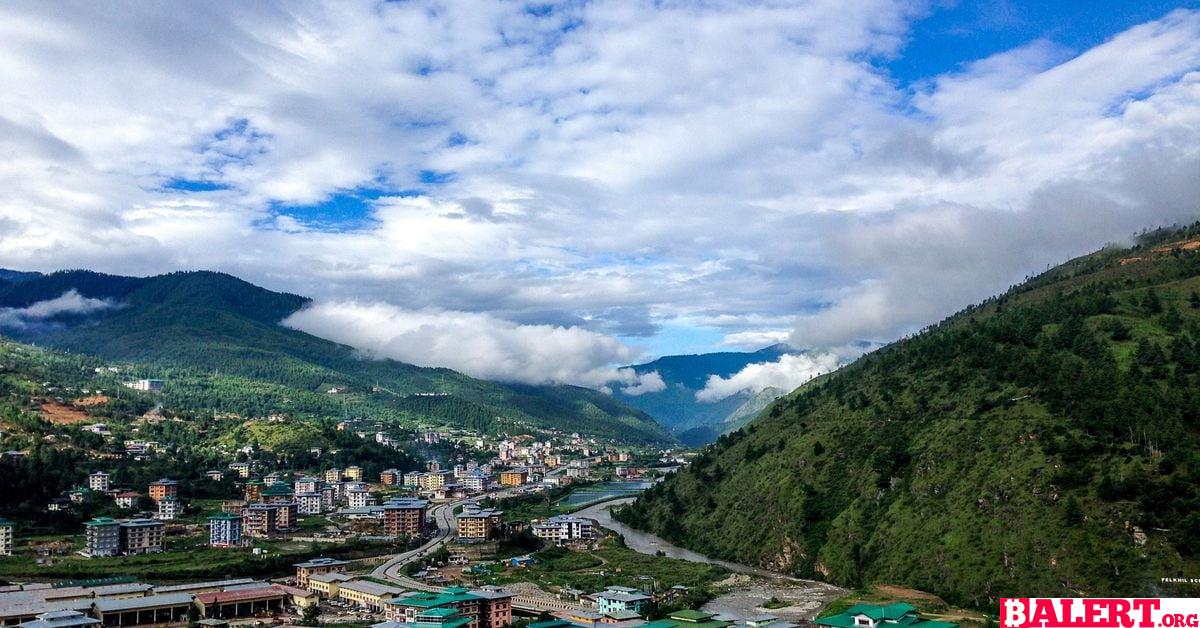
Buddhist Kingdom’s Bold Move into Bitcoin
A stunning landlocked nation nestled between India and China, Bhutan has made headlines by accumulating significant bitcoin (BTC) holdings totaling over $780 million in recent years. This amount represents nearly one-third of the country’s gross domestic product (GDP), positioning Bhutan as the holder of the fourth-largest state-owned stash of BTC, as revealed by the on-chain analytics tool Arkham.
Known for its unique approach to governance, Bhutan emphasizes the happiness of its fewer than 900,000 citizens as a more meaningful metric of well-being than traditional economic indicators. This Himalayan kingdom has become the second nation, following El Salvador, to officially embrace BTC as part of its national strategy, incorporating it into the state-owned Druk Holdings fund.
According to Arkham, Bhutan has established bitcoin mining facilities across various locations, with the most significant operation situated on the site of the now-defunct Education City project. Unlike many governments that acquire BTC through asset seizures related to law enforcement, Bhutan’s holdings have originated from extensive bitcoin mining activities, which have seen a remarkable increase since early 2023.
These mining operations are likely connected to Bitdeer (BTDR), a prominent player in the cryptocurrency mining sector. In 2023, the Singapore-based firm announced its collaboration with the Bhutanese government to develop cryptocurrency mining operations in Southeast Asia, successfully raising over $500 million for this ambitious venture. Following this announcement, Bitdeer disclosed that it had completed the first phase of a 100 megawatt (MW) mining facility.
Looking ahead, Bitdeer announced plans to expand Bhutan’s mining capacity to a staggering 600 MW by 2025, reflecting the growing significance of this initiative.
Despite its small geographic size, even smaller than Switzerland, Bhutan faces challenges such as limited economic diversification and an underdeveloped private sector. The nation primarily relies on sectors like hydropower, tourism, and agriculture to generate revenue. In 2022, Bhutan’s GDP was recorded at just under $3 billion, approximately half that of the Maldives.
To bolster its economy, Druk Holdings is exploring opportunities across various sectors. The organization’s website highlights “digital assets” as a key focus area in its technology-driven investment strategy, which also includes projects in hydropower and emerging digital realms like the metaverse.
Recent activities in the Druk wallets, as monitored by Arkham, indicate a flurry of deposit and withdrawal transactions in recent weeks. The fund has received multiple deposits of up to 2 BTC from Foundry, another mining entity, as well as from other unidentified bitcoin addresses during the past week. Additionally, Druk Holdings has periodically transferred bitcoin to various addresses, including crypto exchanges. One notable transaction from early July involved a transfer of over $25 million worth of BTC sent to the crypto exchange Kraken, suggesting that it was likely sold to capitalize on market conditions.
Business
Bitcoin and Crypto Markets React to Anticipated Federal Rate Cuts
Explore how Bitcoin and cryptocurrency markets are responding to the anticipated Federal rate cuts. Discover the implications for investors and the broader financial landscape in this insightful analysis.

Bitcoin and Crypto Markets Await Federal Rate Cuts
Bitcoin (BTC) and the broader cryptocurrency markets have seen minimal fluctuations over the past 24 hours as traders remain cautious ahead of the upcoming Federal Open Market Committee (FOMC) meeting on Wednesday. This meeting is particularly significant, as officials are anticipated to announce the first interest rate cuts in four years. Currently, Bitcoin is trading just below $58,500, specifically at $58,480, reflecting a relatively stable performance. The CoinDesk 20 (CD20), a benchmark for the largest digital assets, has experienced a slight increase, trading above the 1,800 mark.
In terms of daily activity, inflows into Bitcoin exchange-traded funds (ETFs) have amounted to $12.9 million, with a substantial portion directed towards BlackRock’s IBIT. Analysts widely expect the Fed to unveil a rate cut on September 18, signaling the beginning of a potential easing cycle that has historically provided support for risk assets, including Bitcoin.
As of Tuesday morning in Asia, the 30-Day Fed Funds futures prices indicate that traders perceive a 67% likelihood of a significant 50 basis points rate cut, bringing the target range to 4.7%-5%. This is an increase from Monday’s implied probability of 50% and a notable rise from the 25% probability reported a month ago. On Polymarket, traders are assigning a 57% chance of a decrease exceeding 50 basis points, alongside a 41% chance of a 25 basis points cut.
Meanwhile, the overall market remains relatively stable. Noteworthy movements have been observed, such as XRP rising by 3.5%, SUI increasing by 2.5%, and Fantom’s FTM surging by 10.5%, buoyed by positive market sentiment surrounding its forthcoming rebranding to Sonic.
Trump’s World Liberty Financial to Introduce WLFI Token
In other news, the team behind World Liberty Financial, a project receiving endorsement from former President Donald Trump and his family, has announced the launch of a governance token. However, it is crucial to note that this token will only be available to accredited U.S. investors. During a livestream that lasted over two hours, the team highlighted that the token is intended for governance participation rather than for economic profit and did not disclose a specific launch date during the X Spaces stream.
Throughout the livestream, Trump himself did not specifically mention the token or provide an endorsement. Instead, he reiterated his general views on cryptocurrency policy, much of which echoed his previous public statements, including those made at the recent Bitcoin Conference held in Nashville.
Figure Markets Launches Exchange with Real Estate-Backed Yields
In a groundbreaking development within the crypto space, Figure Markets has announced the launch of its exchange, coinciding with the Token2049 event in Singapore. Founded by Mike Cagney, a co-founder of SoFi, Figure Markets introduces an innovative method for generating yields for users who store their cryptocurrency on the platform.
According to a recent release, Figure Markets claims it can offer returns of up to 8% for non-USD and stablecoin balances. This is achieved by leveraging a fund backed by real-world assets, particularly home equity loans. The operational model involves traders depositing their funds into Figure Markets, which are then pooled and lent to Figure Technologies for the issuance of secured home equity loans. The interest paid by borrowers on these loans creates a spread that not only covers operational costs but also provides returns to investors. These investors benefit from dual recourse protections, daily liquidity, and interest payments that accrue based on the duration of their investments.
While Real World Assets (RWAs) are progressively becoming a noteworthy aspect of the cryptocurrency industry, there are still very few applications that seek to derive yield from these assets to support their operations. Prior to the launch of Figure in 2023, Cagney had withdrawn the company’s bid for a U.S. federal bank charter amid regulatory scrutiny, opting instead to pursue partnerships with established banks.
Business
Meta Bans Russian Media Outlets Amid Disinformation Concerns
In response to rising disinformation concerns, Meta has imposed bans on several Russian media outlets. This decision highlights the ongoing battle against misinformation and the platform’s commitment to ensuring accurate information for its users.

Meta Takes Strong Action Against Russian Media Outlets
On Monday, Meta announced a significant initiative to prohibit Russian media outlets, including the state-funded television network RT, from utilizing its platforms. This decision comes in light of ongoing scrutiny in the United States regarding these outlets’ involvement in covert influence campaigns designed to manipulate online discourse across various social media platforms.
Meta, the parent company of popular applications such as Facebook, Instagram, and WhatsApp, stated that the ban would be implemented in the coming days. This decisive action marks an escalation in the ongoing efforts to combat Russian state media actors, which U.S. intelligence officials have identified as key players in disinformation operations that span the globe, infiltrating the world’s largest social networking sites.
In a formal statement, Meta expressed, “After thorough consideration, we have expanded our current enforcement measures against Russian state media outlets. Rossiya Segodnya, RT, and other related entities are now prohibited from our applications worldwide due to their involvement in foreign interference activities.”
Recently, U.S. authorities have tightened their grip on RT, particularly for its attempts to meddle in the upcoming presidential election scheduled for November. On Friday, the United States, in conjunction with Canada and Britain, accused RT of functioning as a conduit for Russian intelligence agencies. They announced new sanctions aimed at curtailing international funding sources that support disinformation campaigns globally.
This crackdown follows the federal indictment of two RT employees, who allegedly funneled at least $9.7 million to finance American podcasters on Tenet Media, a video-streaming service based in Tennessee. The goal was to amplify the Kremlin’s propaganda and undermine the integrity of the American democratic process.
Secretary of State Antony J. Blinken emphasized the broader implications of these tactics, stating, “We’re revealing how Russia employs similar strategies globally.” He further noted, “The Russian weaponization of disinformation to destabilize and polarize free and open societies is a challenge that impacts every corner of the world.”
-
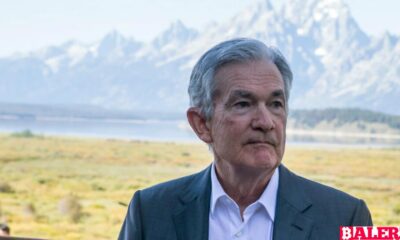
 Business7 months ago
Business7 months agoThe Significance of Jackson Hole: A Central Banking Tradition
-

 Tech6 months ago
Tech6 months agoNew Leaks and Features About the Samsung Galaxy S25 Ultra
-
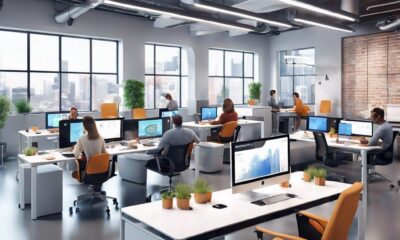
 Article9 months ago
Article9 months agoCreative Design Applications Developed with Artificial Intelligence
-

 Business6 months ago
Business6 months agoBhutan’s Strategic Investment in Bitcoin: A New Era for the Himalayan Kingdom
-

 Business8 months ago
Business8 months agoObituary: Dan Collins
-

 World6 months ago
World6 months agoThierry Breton Resigns: Impact on European Union Leadership
-

 Gaming6 months ago
Gaming6 months agoNew Details and Trailer Released for Dead Rising Deluxe Remaster
-

 Gaming6 months ago
Gaming6 months agoNew Details for Alan Wake 2 and PlayStation 5 Pro Announcement









